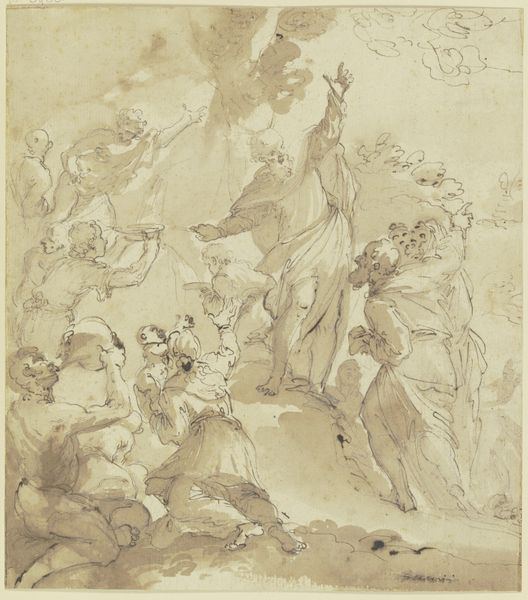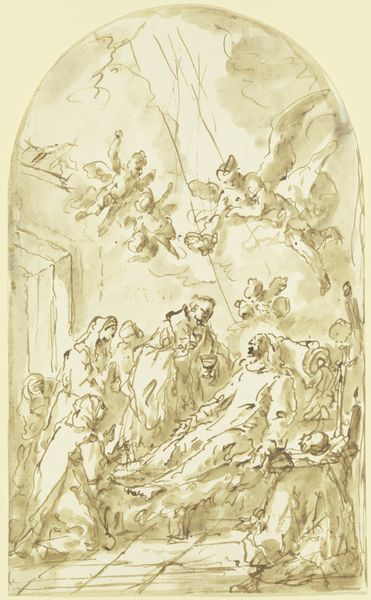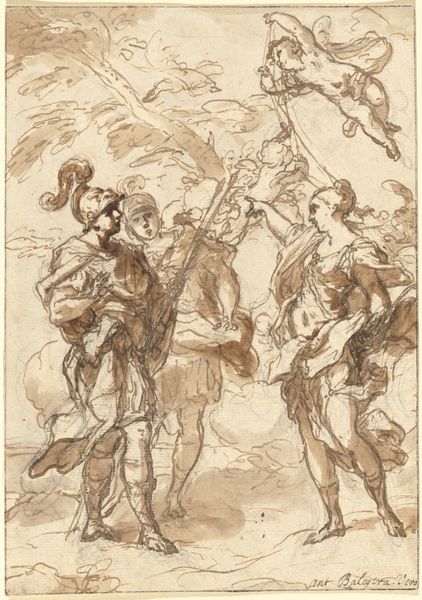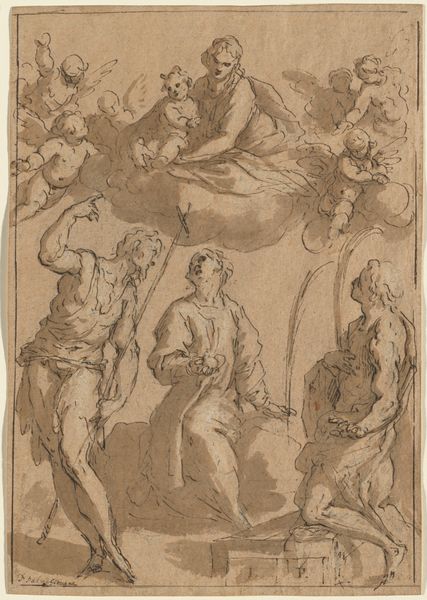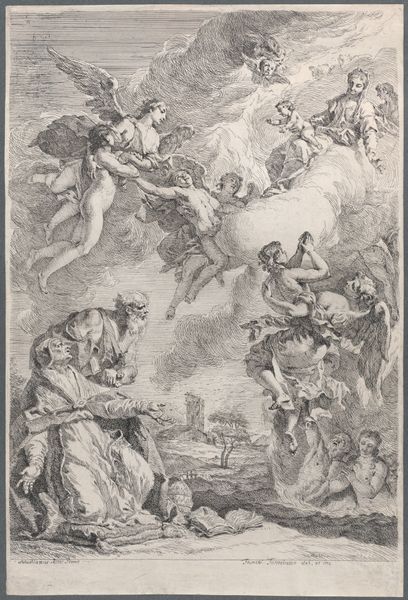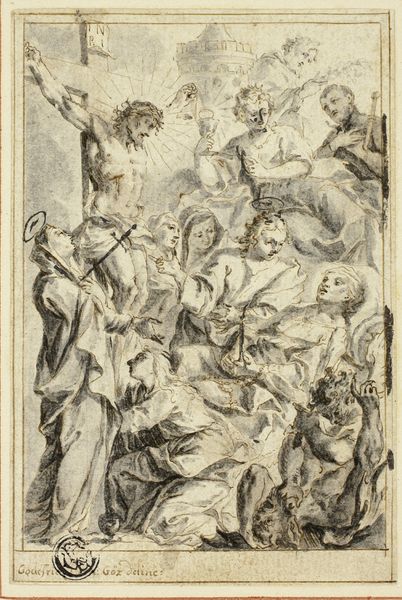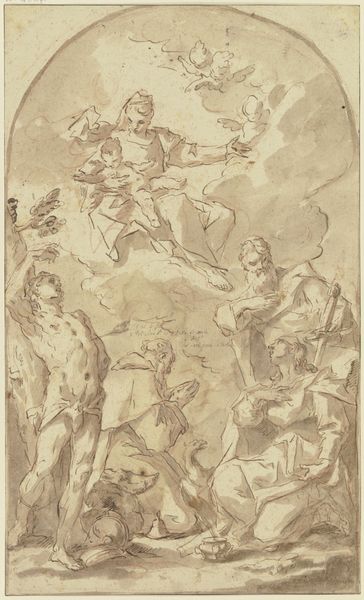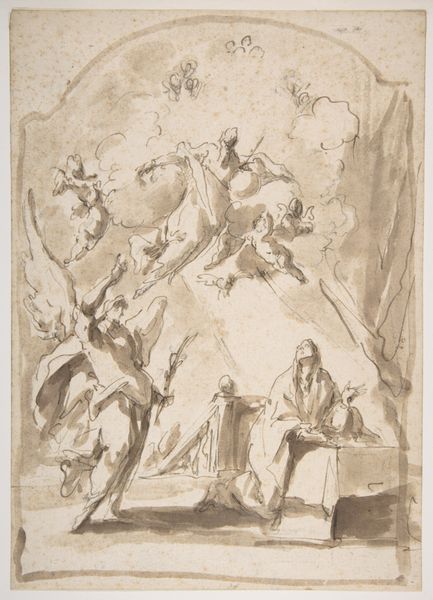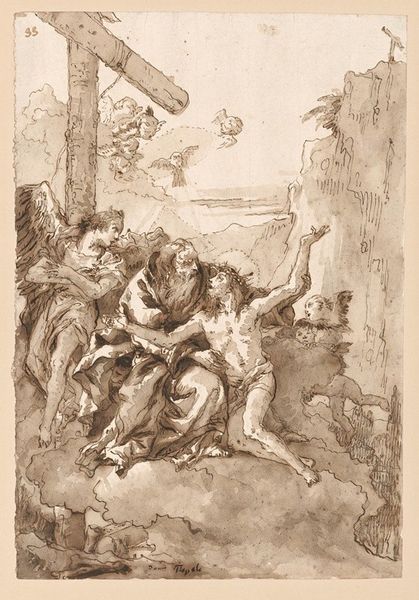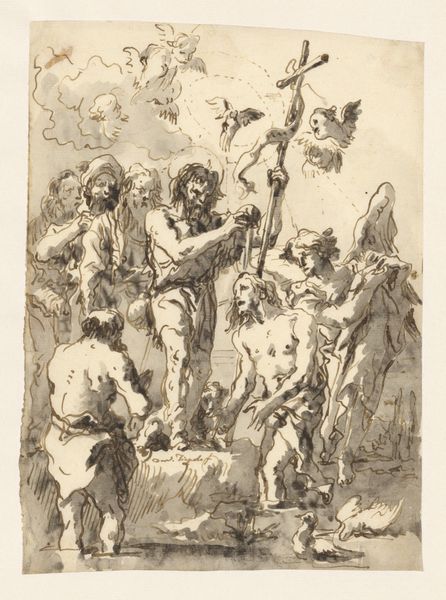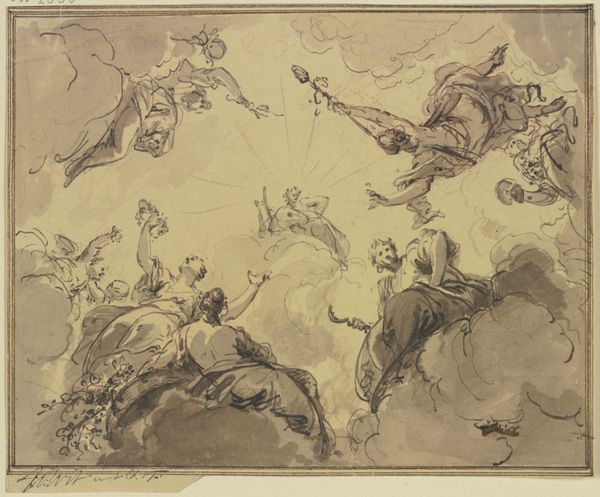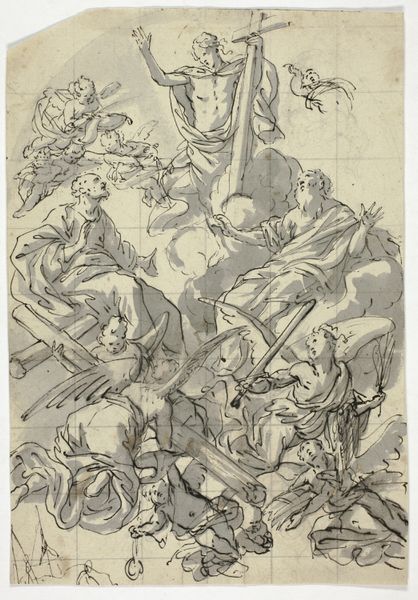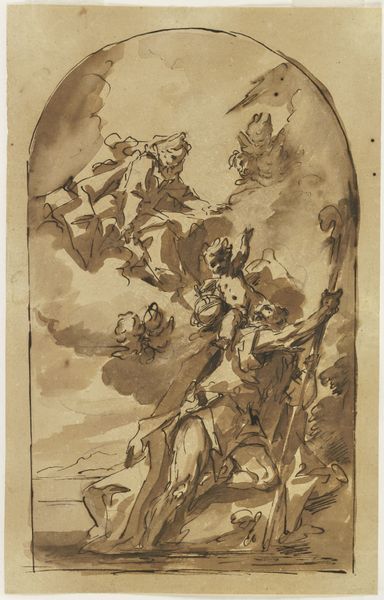
drawing, paper, ink, chalk, pen
#
drawing
#
ink drawing
#
figuration
#
paper
#
ink
#
sketchwork
#
chalk
#
pen
#
genre-painting
#
history-painting
#
italian-renaissance
#
italy
Dimensions: 285 × 172 mm
Copyright: Public Domain
Curator: Welcome. Before us is "Death of Saint Joseph" by Gaspare Diziani. Editor: It has a rather ethereal feel to it. The soft lines of ink and chalk on paper lend it a sense of movement, even in this quiet, solemn scene. Curator: Diziani, an Italian painter, thrived during a period when Venice was undergoing profound shifts in its political and cultural landscape. Religious paintings such as this reflected the social climate. Editor: It’s interesting how the pen, ink, and chalk, these relatively humble materials, create such drama. The composition draws your eye from the earthly plane of the saint’s deathbed, all the way up to a host of welcoming angels. The hand of the Saint reaching toward God makes one wonder about the type of paper Diziani used. Its absorbency must have contributed to the tonality of the ink. Curator: Absolutely. The materiality certainly influences the way the scene reads. We should also consider how prints, accessible and easily circulated, contributed to shaping public perception of religious figures. This drawing seems poised for reproduction. Editor: You know, looking at the quickly rendered sketchwork here makes me think about the labor involved in producing images for popular consumption. How many hands would this have passed through, and in what context would viewers have seen it? Was it a study, a final piece? Curator: Precisely. And that distribution shapes not just religious devotion, but political and social ideologies as well. Images carried immense power in a society grappling with complex social hierarchies. Editor: This drawing is interesting from a materialist perspective too. Think about the craft of the artist. Each stroke of the pen, each carefully placed chalk mark, embodies the social and economic conditions of its creation. The value of this drawing, and who had access to it, becomes as relevant as its subject matter. Curator: Well, the context and consumption are all interwoven, right? The meaning viewers found, both then and now, stems from a complex understanding of artistry and material conditions, religious meaning and the power of the image. Editor: Ultimately, "Death of Saint Joseph" exemplifies how art, even in its simplest form, carries significant weight. It reflects not only religious beliefs but also the material and social conditions of its creation and reception. Curator: Thank you for these perspectives, a powerful reminder of the importance of this work for Italian Renaissance.
Comments
No comments
Be the first to comment and join the conversation on the ultimate creative platform.
